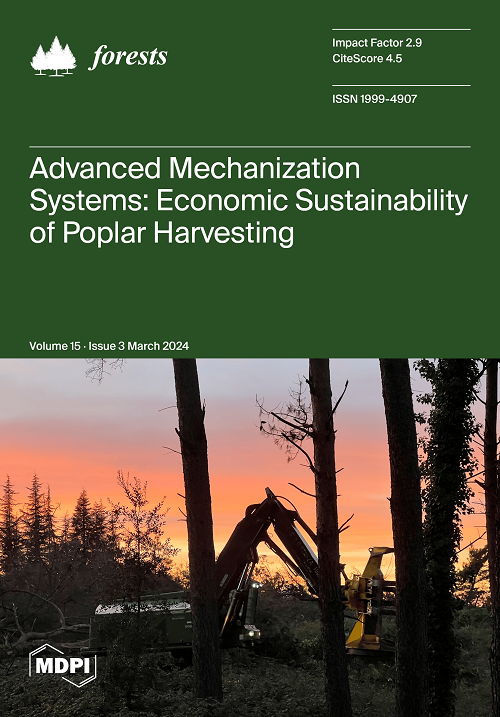韩国六种橡树的宏观和微观解剖特征
IF 2.5
2区 农林科学
Q1 FORESTRY
引用次数: 0
摘要
木材的宏观和微观解剖特征影响着木材的利用。本研究调查并比较了六种韩国橡木的解剖学特征:这六种韩国橡木分别是:Quercus variabilis、Quercus serrata、Quercus mongolica、Quercus dentata、Quercus aliena 和 Quercus acutissima。显微解剖学特征是根据国际木材解剖学家协会的硬木鉴定清单进行评估的。Q. variabilis 的树皮质地为木栓质,颜色与 Q. serrata 相似。在 Q. serrata 和 Q. mongolica 中观察到平脊和浅裂树皮。所有树种的心材颜色都比边材深,但也有颜色差异。Q. variabilis 的心材-边材颜色与 Q. acutissima 相似,而 Q. mongolica 和 Q. aliena 的心材-边材颜色相似。关于显微特征,Q. variabilis 和 Q. acutissima 表现出相似的晚材血管排列,具有对角线和/或放射状模式。相比之下,在 Q. serrata、Q. mongolica、Q. dentata 和 Q. aliena 中观察到的是具有角轮廓的树枝状到对角线状的血管模式。此外,Q. variabilis 和 Q. acutissima 晚材中有血管中心、汇合和单侧气管旁轴向实质。总之,树皮形态、树皮颜色、木材颜色和晚材血管特征可作为识别韩国栎类的关键。本文章由计算机程序翻译,如有差异,请以英文原文为准。
Macroscopic and Microscopic Anatomical Characteristics of Six Korean Oak Species
The macroscopic and microscopic anatomical characteristics of wood impact its utilization. This study investigated and compared the anatomical characteristics of six Korean oak wood species: Quercus variabilis, Quercus serrata, Quercus mongolica, Quercus dentata, Quercus aliena, and Quercus acutissima. Microscopic anatomical characteristics were evaluated according to the International Association of Wood Anatomists’ list for hardwood identification. Q. variabilis had a corky bark texture, with a color similar to that of Q. serrata. Flat ridges and shallow-fissured barks were observed in Q. serrata and Q. mongolica. The heartwood color was darker than that of sapwood in all species, with color variations. Q. variabilis had heartwood–sapwood colors similar to those of Q. acutissima, while Q. mongolica and Q. aliena presented similar heartwood–sapwood colors. Concerning microscopic features, Q. variabilis and Q. acutissima exhibited similar latewood vessel arrangements, featuring diagonal and/or radial patterns. In contrast, dendritic-to-diagonal patterns of vessels with angular outlines were observed in Q. serrata, Q. mongolica, Q. dentata, and Q. aliena. Additionally, Q. variabilis and Q. acutissima had vasicentric, confluent, and unilateral paratracheal axial parenchyma in the latewood. In summary, bark morphology, bark color, wood color, and latewood vessel characteristics can be used as identification keys for Korean oak species.
求助全文
通过发布文献求助,成功后即可免费获取论文全文。
去求助
来源期刊

Forests
FORESTRY-
CiteScore
4.40
自引率
17.20%
发文量
1823
审稿时长
19.02 days
期刊介绍:
Forests (ISSN 1999-4907) is an international and cross-disciplinary scholarly journal of forestry and forest ecology. It publishes research papers, short communications and review papers. There is no restriction on the length of the papers. Our aim is to encourage scientists to publish their experimental and theoretical research in as much detail as possible. Full experimental and/or methodical details must be provided for research articles.
 求助内容:
求助内容: 应助结果提醒方式:
应助结果提醒方式:


